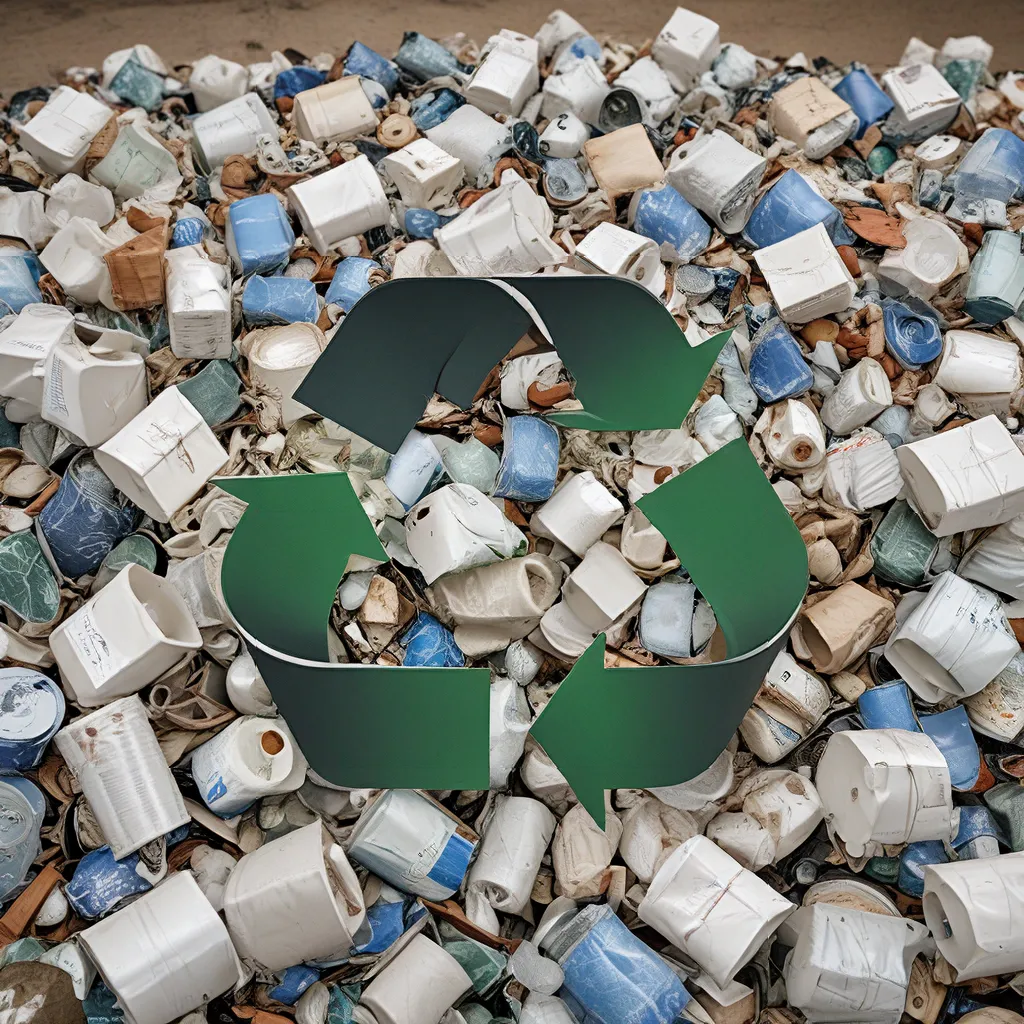
Turning Trash into Treasure
Have you ever looked at your household trash and wondered, “Is there a way I could turn this into something useful?” Well, it turns out the answer is a resounding “Yes!” Across the country, innovative companies and researchers are finding ingenious ways to transform our organic waste into clean, renewable energy sources. It’s like taking a pile of discarded materials and turning it into a goldmine of electricity, heat, and even vehicle fuel.
Let me tell you, when I first learned about this, my mind was completely blown. I always knew that recycling was important, but I had no idea just how much potential our waste really holds. It’s like taking a sack of potatoes and turning it into a five-star gourmet meal – the transformation is nothing short of amazing.
The Power of Organic Waste
So, what exactly are these researchers and companies doing? Well, it all comes down to a process called anaerobic digestion. Sounds technical, I know, but bear with me – it’s actually pretty straightforward. Basically, they’re taking all sorts of organic waste, like food scraps, manure, and wastewater sludge, and putting it into these specialized containers called anaerobic digesters.
Inside these digesters, bacteria get to work breaking down the organic material in an oxygen-free environment. As a result, they produce a gas called biogas, which is mostly made up of methane and carbon dioxide. Now, here’s the really cool part – this biogas can be captured and used as a renewable source of energy!
It’s kind of like how landfills already produce methane as organic waste decomposes, but with anaerobic digesters, we can harness that gas in a much more controlled and efficient way. And the best part? Biogas can be used to generate electricity, provide heat, or even power vehicles. Talk about turning trash into treasure!
Unlocking the Potential of Waste
Now, you might be wondering, “Okay, this all sounds great, but how much of an impact can this really have?” Well, let me put it this way – the United States produces over 70 million tons of organic waste each year, and we currently only have about 2,200 operating biogas systems. That means we’re only tapping into a small fraction of the potential out there.
Think about it this way – if we were able to harness all of that organic waste, it could generate enough renewable baseload power to rival traditional fossil fuels. And the best part? Biogas is a clean, reliable energy source that can complement other intermittent renewables like solar and wind.
But the benefits don’t stop there. Turning our waste into energy can also help reduce greenhouse gas emissions, improve water quality, and create thousands of jobs. It’s a win-win-win situation, if you ask me.
A Game-Changing Solution
Now, I know what you might be thinking – this all sounds too good to be true. But trust me, companies in the energy-saving products industry are already making this a reality. They’re building these anaerobic digesters, collecting the biogas, and turning it into usable energy. And the results are nothing short of remarkable.
For example, Fair Oaks Dairy in Indiana produces a staggering 12 million cubic feet of biogas every single day from the manure of their 9,000 dairy cows. They’re then using that biogas to power their operations, reducing their diesel fuel consumption by a whopping 15 million gallons per year.
And it’s not just dairy farms – wastewater treatment plants, food processing facilities, and even municipalities are all getting in on the action. By harnessing the power of their organic waste, they’re not only saving money on energy costs, but they’re also reducing their environmental impact in a big way.
A Future Fueled by Waste
As exciting as all of this is, we’ve only just scratched the surface of what’s possible. The United States has the potential to add over 13,500 new biogas systems, which could create more than 335,000 temporary construction jobs and 23,000 permanent positions. That’s a massive economic opportunity that we simply can’t afford to ignore.
But to really unlock this potential, we need strong policy support and consistent funding for innovative programs like the USDA’s Bioenergy Program for Advanced Biofuels and the Rural Energy for America Program (REAP). These initiatives are crucial for driving investment and innovation in the biogas industry.
So, the next time you look at your household trash, I want you to think about the incredible potential it holds. Because with the right approach, we can turn our waste into something truly remarkable – a clean, renewable source of energy that can power our homes, fuel our vehicles, and help create a more sustainable future for all.
It’s time to stop seeing our waste as a problem and start viewing it as the solution. Who knows, maybe one day your own organic scraps could be the key to powering your energy-saving products and reducing your carbon footprint. The future of energy is in our hands, and it’s time to start turning trash into treasure.